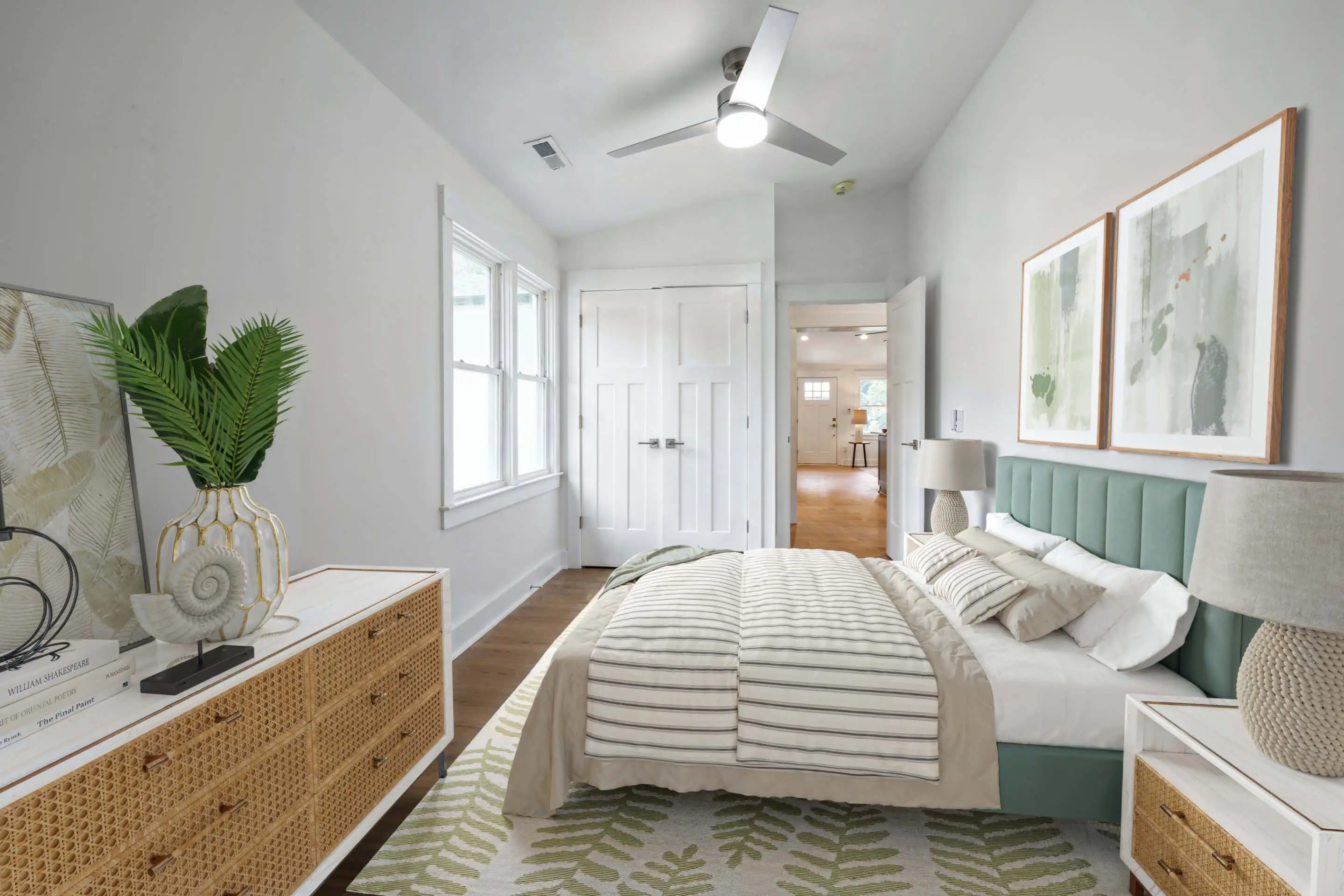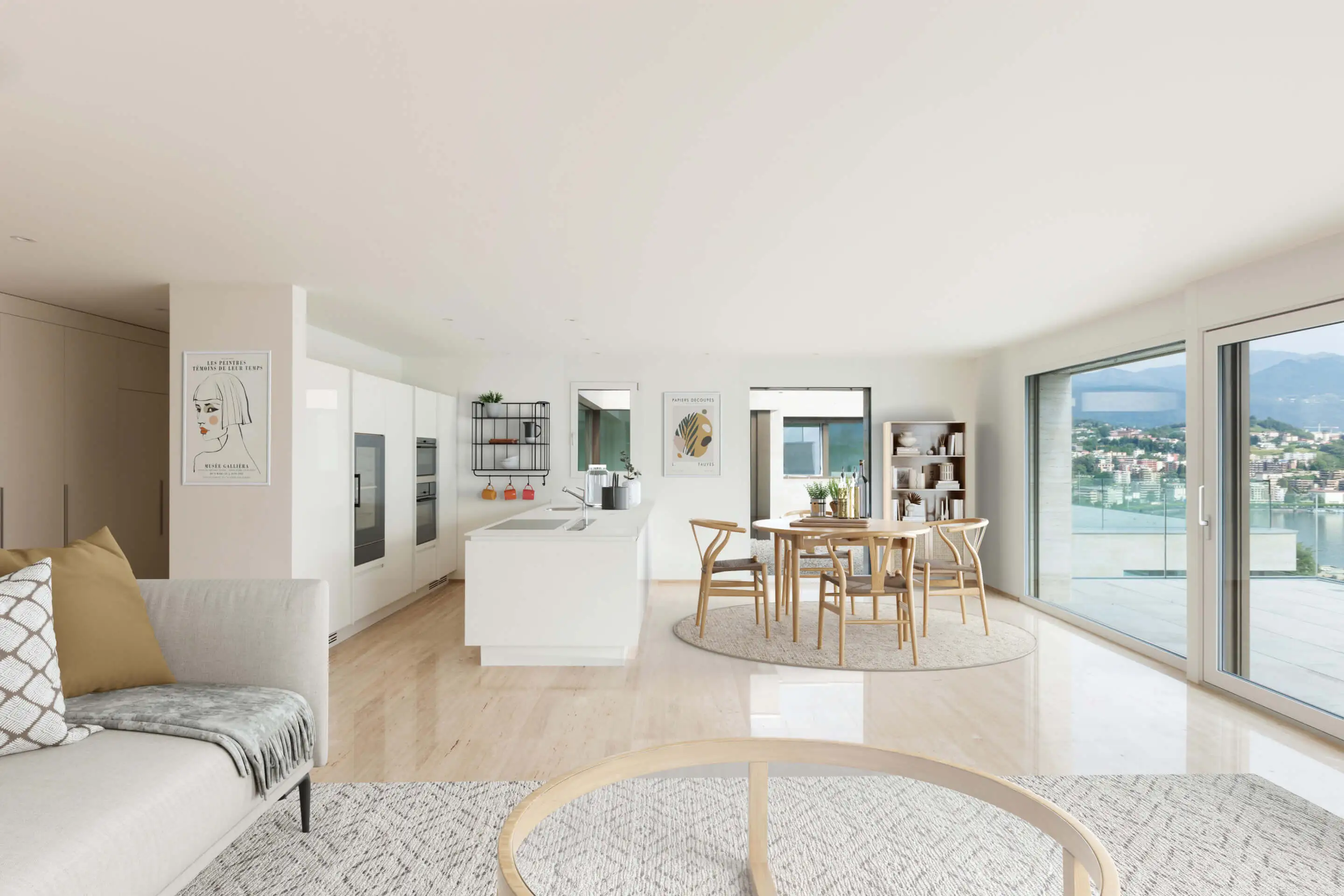
In the increasingly competitive real estate industry, virtual staging has become an essential tool for showcasing properties to potential buyers. Virtual staging involves digitally furnishing and decorating a property to enhance its visual appeal. By utilizing advanced technologies and creative design strategies, virtual staging offers a cost-effective and flexible alternative to traditional staging methods. However, to more effectively leverage the power of virtual staging, it is crucial to understand the needs and preferences of your target audience. Buyer personas— fictional representations of your ideal buyers, created based on market research and data analysis—can help achieve this.
Buyer personas play a crucial role in business and marketing. According to Marketing Insider Group, “93% of companies who exceed lead and revenue goals segment their database by buyer persona.” This technique is particularly helpful when applied to virtual staging. Each buyer persona can represent a group of similar buyers in the real estate market. By understanding the characteristics, motivations, and preferences of your target audience, you can tailor your virtual staging efforts to more effectively resonate with potential buyers.
When it comes to virtual staging, it's not just about creating visually appealing images. It's about creating an experience that speaks directly to your target audience. By incorporating buyer personas into your virtual staging strategy, you can ensure that every detail, from the furniture choices to the color schemes, aligns with the preferences of your ideal buyers.
Defining Buyer Personas
Defining buyer personas involves identifying key demographic information about your target audience, such as age, gender, income, and location. Additionally, understanding their lifestyle choices, aspirations, and pain points can help shape your virtual staging strategy. By creating detailed buyer personas, you can fine-tune your virtual staging to appeal to specific buyer segments.
For example, let's say your target audience consists of young families looking for a spacious and family-friendly home. By understanding their needs and preferences, you can showcase virtual staging that highlights features such as a playroom, a backyard with a swing set, and a spacious kitchen for family gatherings.
On the other hand, if your target audience consists of empty nesters looking to downsize, your virtual staging can focus on creating a cozy and low-maintenance living space. This could include showcasing a smaller dining area, a comfortable reading nook, and a well-organized storage area.
The Connection Between Buyer Personas and Virtual Staging
By aligning your virtual staging with the preferences and desires of your target audience, you can generate for potential buyers a connection to the space. For example, if your buyer personas consist of young professionals seeking a modern and minimalist aesthetic, showcasing a property with sleek furniture and contemporary decor will significantly enhance their interest and engagement.
Virtual staging allows you to showcase the potential of a property and help buyers envision themselves living in the space. By incorporating buyer personas into your virtual staging strategy, you can go beyond just showing a generic representation of a home. Instead, you can create virtual spaces that are tailored to the specific needs and preferences of your target audience.
For instance, if your buyer personas consist of eco-conscious individuals, you can incorporate sustainable design elements into your virtual staging. This could include showcasing energy-efficient appliances, eco-friendly materials, and a well-designed recycling area.
In summary, adapting your staging to match buyer personas offers numerous benefits. By incorporating buyer personas into your virtual staging strategy, you can create a more engaging and personalized experience for potential buyers, increasing the chances of a successful sale.
Identifying your target audience is the first step in tailoring your virtual staging efforts. Conduct market research, analyze demographic data, and gather feedback from previous clients to gain insights into your ideal buyers. Understanding their wants, needs, and expectations will allow you to create virtual staging that speaks directly to them.
Identifying Your Target Audience
Identifying your target audience goes beyond basic demographics. As mentioned earlier, it is important to utilize demographic data to determine a general idea of an ideal buyer. But according to Forbes, to leverage buyer personas effectively, you must also focus on psychographics— the psychological criteria of potential buyers; consider factors such as lifestyle choices, attitudes, emotions and even aspirations to gain a holistic understanding of who your potential buyers are. By combining this information with market research, you can create buyer personas that accurately represent your target audience and enable you to market more effectively.
Customizing Virtual Staging According to Buyer Personas
Once you have defined your buyer personas, it's time to customize your virtual staging accordingly. Incorporate design elements, colors, and styles that align with the preferences of each buyer persona. By catering to their unique tastes and preferences, you can create virtual staging that resonates with potential buyers and increases the chances of a successful sale. If you haven’t already, I recommend checking out “Apply Design: Beginner's Guide to Virtual Staging.”
Highlight Key Selling Points
When staging a property, it is important to highlight its key selling points. This holds true for virtual staging as well. By using buyer personas as a guide, identify the features and qualities that are most likely to appeal to your target audience.
Whether it's a spacious kitchen with state-of-the-art appliances, a luxurious master suite with a spa-like bathroom, or a beautiful outdoor space perfect for entertaining, make sure these elements take center stage in your virtual staging. Showcase them in a way that captures the attention of potential buyers and makes them envision themselves living in the space.
The Impact of Tailored Virtual Staging on Property Sales
Tailoring virtual staging to your target audience significantly impacts property sales. If you haven’t already, it may be helpful to review "The Role of Virtual Staging Software in Enhancing Property Listings and Driving Sales.” By creating a personalized experience for potential buyers, you can capture their attention and evoke positive emotions towards the property. This emotional connection can lead to increased engagement, higher offer rates, and ultimately, a faster sale.
When buyers can visualize themselves living in a property, they are more likely to feel a sense of attachment and connection. By tailoring virtual staging to their preferences, you create a space that resonates, ultimately influencing their decision-making process. The ability to see their future home in its best light can sway buyers towards making an offer, boosting your chances of a successful sale.
Measuring the success of tailored virtual staging is crucial to refining your marketing strategy. Monitor key metrics such as engagement rates, click-through rates, and conversion rates to gauge the effectiveness of your virtual staging efforts. By analyzing the data, you can make informed decisions to continuously optimize your virtual staging and drive better results.
As technology continues to advance, virtual staging and buyer personas are poised to play an even more significant role in the real estate industry.
Technological Advancements in Virtual Staging
From augmented reality to virtual reality, emerging technologies are revolutionizing the virtual staging landscape. These advancements will enable buyers to experience properties in unprecedented ways, creating immersive and interactive experiences that closely mimic real-life. As a result, the impact of virtual staging on buyer decisions will continue to grow.
The Growing Importance of Buyer Personas in Real Estate Marketing
Buyer personas will continue to shape real estate marketing strategies in the future. As markets become more competitive, understanding your target audience and tailoring your marketing efforts to their specific needs will be key to standing out from the crowd. By creating personalized experiences through virtual staging, you can capture the attention of potential buyers and position yourself as a trusted and reliable real estate professional.
Buyer Personas in the Real Estate Industry
Buyer personas are not a new concept in marketing, but their application in the real estate industry is gaining momentum. As the market becomes more competitive, real estate professionals are recognizing the value of understanding their target audience on a deeper level.
Ultimately, virtual staging combined with buyer personas allows you to create a powerful marketing tool that caters to the specific needs and desires of your target audience. By tailoring your staging to match buyer personas, you can engage potential buyers on a deeper level and increase the likelihood of a successful sale.




